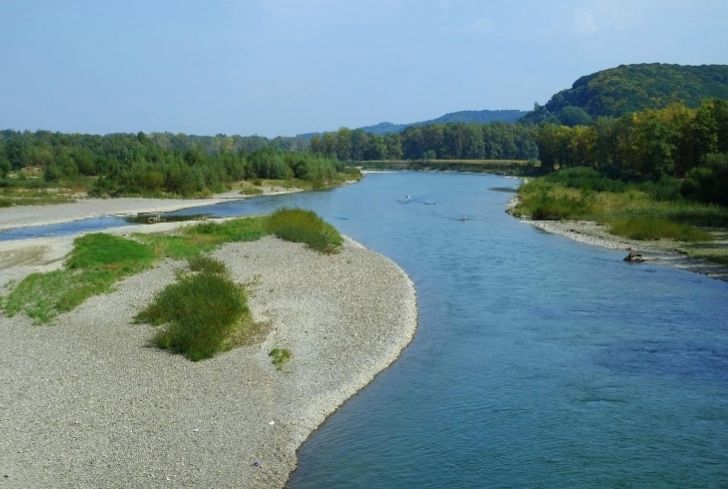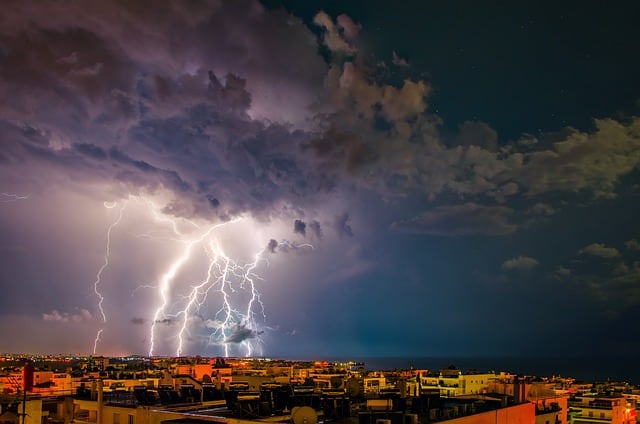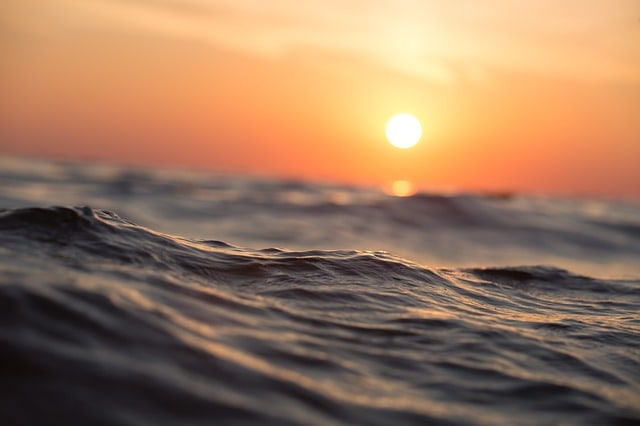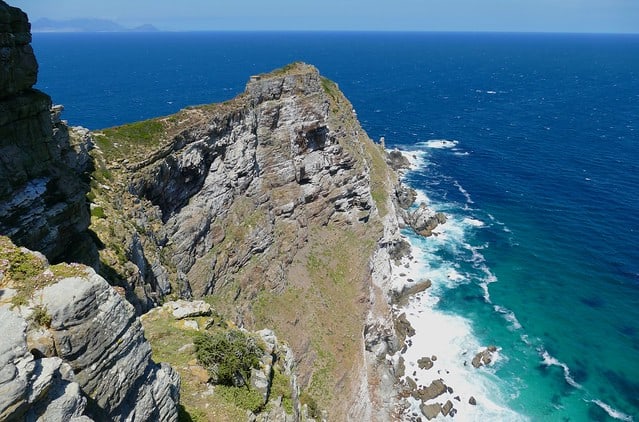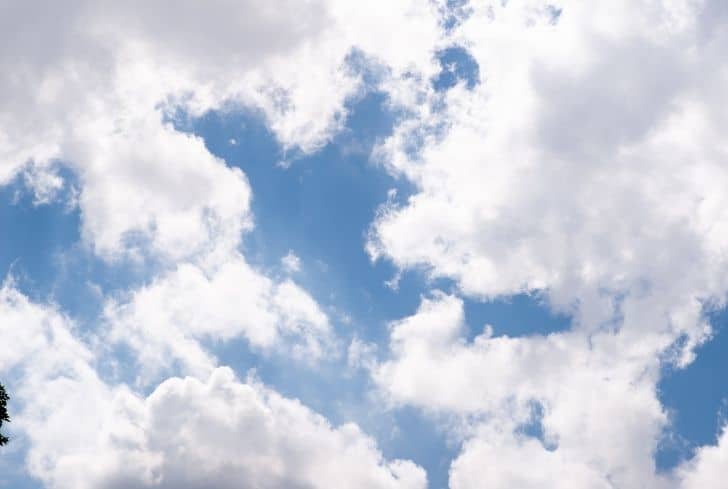How are Waterfalls Formed and 25+ Wondrous Facts About the Waterfalls
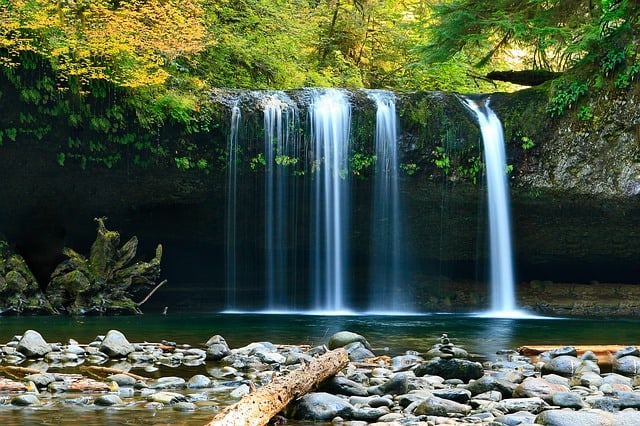
When a river or any other body of water starts falling almost vertically over an edge of a rocky surface, it is known as waterfall. Also known as cascade, a waterfall usually takes a steep plunge into a pool below. Waterfalls generally represent a major interruption of a course of a river by following the process of erosion or deposition.
How are Waterfalls Formed?
Waterfalls are mainly caused whenever running water causes erosion of rocks, or a geological force has resulted in a sudden change in a rock or the rock types. Also, whenever there is a gap in elevation in the earth’s surface, a waterfall occurs. However, there are several other reasons that enumerate the formation of a waterfall. Some of them are discussed below.
1. Glaciers
When a glacier carves its way between the rocks down a valley, it creates a deep notch and leaves behind hanging river emptying the water down the steep sides of the valleys. These waterfalls are generally higher and thinner and are quite common in Fiordland and Westland in New Zealand.
2. Erosion of Soft Rock
Surfaces containing both softer and harder rocks, often wear out in parts exposing the harder rocks and end up forming waterfalls. In New Zealand, often the mudstone is eroded, leaving the limestone and sandstone at a higher level, which causes a waterfall.
3. Variation in the Volume of Water
When smaller tributaries reach the steep channel banks carved by a river, they fall over the edge, thereby creating waterfalls. The waterfalls that drop down the banks of mudstone into the River Wanganui are a good example.
4. Volcanoes
A cliff sometimes created by volcanic activity is also a reason behind the formation of a waterfall. Besides, the underground thermal activity also causes waterfalls to form.
5. Earthquakes
Whenever an earthquake occurs, it creates a rift in the earth’s crust, forming a channel, wherefrom water of any river flowing in an old channel slides down and forms a waterfall.
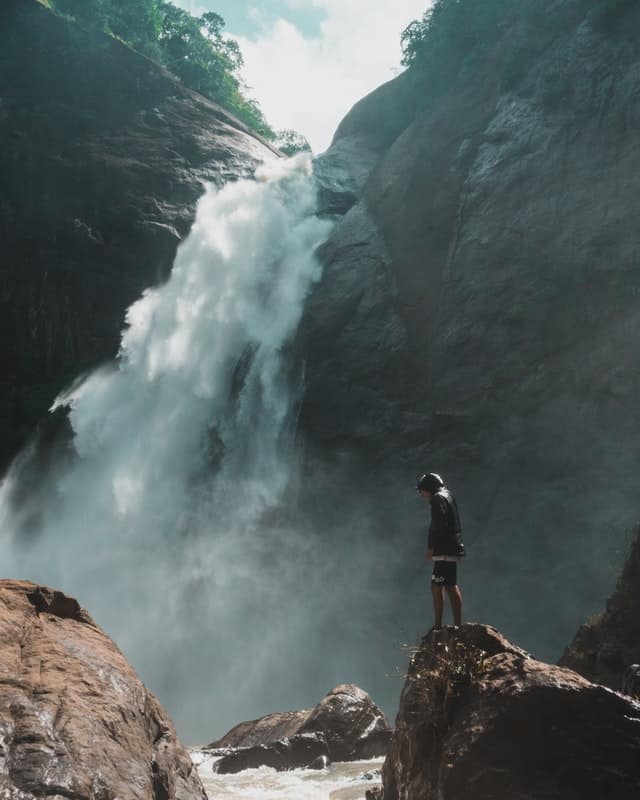
20+ Wondrous Facts About Waterfalls
Fact 1: Land formation could be one of the causes of a waterfall. Whenever there is a hanging cliff, running water might be forced to fall from the height.
Fact 2: Waterfalls might be of various length and breadth, and diversity and that is what makes the waterfall such an interesting natural phenomenon.
Fact 3: Waterfalls can be of 10 varieties depending on the way of descend-plunge, horsetail, cataract, multi-step, block, cascade, segmented, tiered, fan, and the punchbowl.
Fact 4: Angel Falls in Venezuela happens to be the highest uninterrupted waterfall in the world with an estimated altitude and plunge of 979 meters and 807 meters respectively.
Fact 5: Victoria Falls located on the Zambezi River bordering Zambia and Zimbabwe is categorized as the largest waterfall combining a width of 1708 meters and height of 108 meters. CNN once described it as the seventh wonders of the world.
Fact 6: Niagara Falls, the collective name given to three waterfalls, bordering Canada and the United States is the most visited waterfall in the world recording around 30 million visitors per year. The water from Niagara Falls is also used for the generation of hydroelectric power.
Fact 7: Iguazu Falls, stretched as an escarpment of Argentina – Brazil border, consist of 275 falls along the Iguazu River. It was declared as a World Heritage Site by UNESCO in 1984.
Fact 8: Cascata delle Marmore, a man-made waterfall created by the ancient Romans, 165 meters is the highest man-made waterfall in the world.
Fact 9: With an altitude of 739 meters, Yosemite Falls in California is the tallest waterfall of the United States.
Fact 10: Kaieteur Falls, located in the Potaro River, at the center of Guyana’s rainforest is the world’s largest single drop waterfall by volume. Its average flow is about 663 cubic meters per second.
Fact 11: Horsetail Falls in California’s Yosemite National Park is meant to be a kind of its own. It’s said to be famous for ‘Firefall’ one of the rarest natural phenomena of nature.
Fact 12 : Ban Gioc Detian falls, situated between China and Vietnam, is considered the fourth largest cross border falls of the world after Iguazu.
Fact 13: Gullfoss, one of the most popular tourist attractions of Iceland, is a waterfall having a height of 32 meters and is split into two waterfalls. The upper one has a drop of 11 meters while the lower one records 21 meters.
Fact 14: Some waterfalls freeze during winter (at around -6 degree Celsius) and the result is that the water molecules begin sticking to each other in the form of ‘frazil’ ice particles.
Fact 15: Waterfall being a thrilling and ecstatic affair, adventure freaks perform stunts and other activities like tight ropes, canoes and jet skiing around them.
Fact 16: Lauterbrunnen, located in Switzerland, is made up of several glaciers, and has as many as 72 waterfalls. If ever, you are planning to visit this place, make sure you see the beautiful sights of these waterfalls.
Fact 17: There is the presence of underground as well as underwater falls in many cases of the world. The Denmark Strait Cataract which is about 11,500 feet in height is said to be the highest underwater fall.
Fact 18: The bottom of the waterfall is often cracked, jagged rocks with sharp edges as the crashing water have literally washed the edges.
Fact 19: Waterfall in a particular region always helps the geologists and hydrologists to determine the locations fall line, and the underlying rock structure.
Fact 20: Often, a whirlpool is created in the river bed where a waterfall plunges, thereby creating a swirl of stones and mud resulting in greater erosion.
Fact 21: The tallest waterfall in the United Kingdom is Eas a’ Chual Aluinn. Located in Scotland, this waterfall has a height of about 660 feet.
Fact 22: The most beautiful waterfall present in East Africa is situated in Nyahururu, which is 74 meters on the Ewaso Ngiro River.
Fact 23: The Dudhsagar falls, situated in Goa, India is one of the most popularly visited waterfalls. It plunges from a height of 1020 feet, drawing away a chunk of tourist from the magical beaches of Goa. It is rated as one of the notable 100 falls of India.
Fact 24: The source of Ganges is spotted to be from Gangotri glacier (13200 feet) above the sea level. Located in Uttarakhand, India, it is one of the most scenic waterfalls of India. People go for various water sports like rafting and trekking over here every year.
Fact 25 : Waterfall is a natural resource and water collected from it is rich in mineral resources. You may have the pride to drink water in the purest form. Moreover, a waterfall is a natural beauty, and its sound may help you curb down stress.
Fact 26: Waterfalls can be used to treat various physiological conditions and aid in reducing muscle tension, joint stress, help in staying hydrated, moisturizing skin, keeping your hair healthy, and many more.
Fact 27: According to studies, the negative ions released by waterfalls help to improve the oxygen supply to the brain, which in turn helps to improve your mood and also acts as a stress-buster.
Fact 28: Considered one of the safe cascade waterfall variants, the Monkey Falls in India usually drop over multiple rock surfaces.
Fact 29: A fast-moving waterfall is a hot spot for all adventure sports lovers as it facilitates various water sport activities like rafting, rowing, etc.
Sources:
- https://www.nationalgeographic.org/encyclopedia/waterfall/
- Jock Phillips, ‘Waterfalls – Causes of waterfalls’, Te Ara – the Encyclopedia of New Zealand, http://www.TeAra.govt.nz/en/waterfalls/page-2 (accessed 25 May 2019)
- https://www.treebo.com/blog/highest-waterfalls-in-india/

